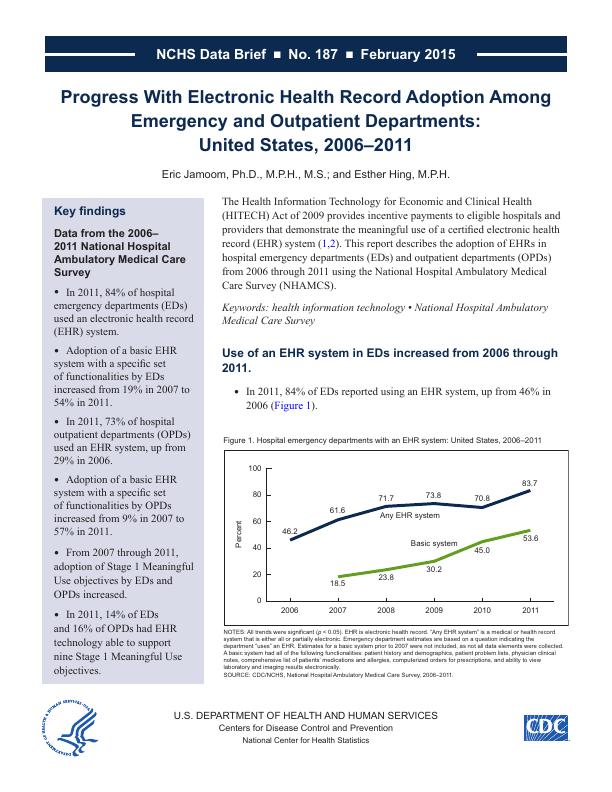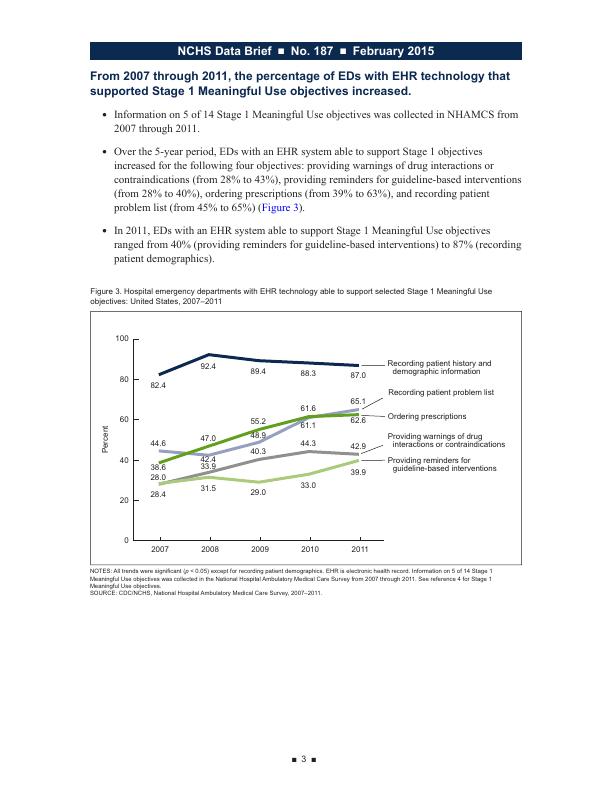Progress with Electronic Health Record Adoption Among Emergency and Outpatient Departments in the US, 2006-2011
Problem Statement, Purpose of the Study, Significance, Background, Framework
8 Pages2976 Words233 Views
Added on 2023-06-13
About This Document
This report provides data on the adoption of electronic health record (EHR) systems in hospital emergency departments (EDs) and outpatient departments (OPDs) in the US from 2006 to 2011. The report highlights the increase in adoption of EHR systems and the percentage of hospitals that met the criteria for a basic system. The report also discusses the HITECH Act of 2009 and the federal standards of “meaningful use” of EHRs in three stages.
Progress with Electronic Health Record Adoption Among Emergency and Outpatient Departments in the US, 2006-2011
Problem Statement, Purpose of the Study, Significance, Background, Framework
Added on 2023-06-13
ShareRelated Documents
End of preview
Want to access all the pages? Upload your documents or become a member.
Physician Experience With Electronic Health Record Systems That Meet Meaningful Use Criteria: NAMCS Physician Workflow Survey, 2011
|8
|3189
|416
Healthcare Management - Doc
|5
|706
|50
National Electronic Health Records Survey: 2015 State and National Electronic Health Record Adoption Summary Tables
|3
|995
|221
Acute, Ambulatory, and Inpatient Settings and their EHR Needs
|4
|764
|68
Implementation of EMR/EHR in the Hospital
|18
|4251
|26
The Assignment on Health Informatics
|6
|1064
|16



